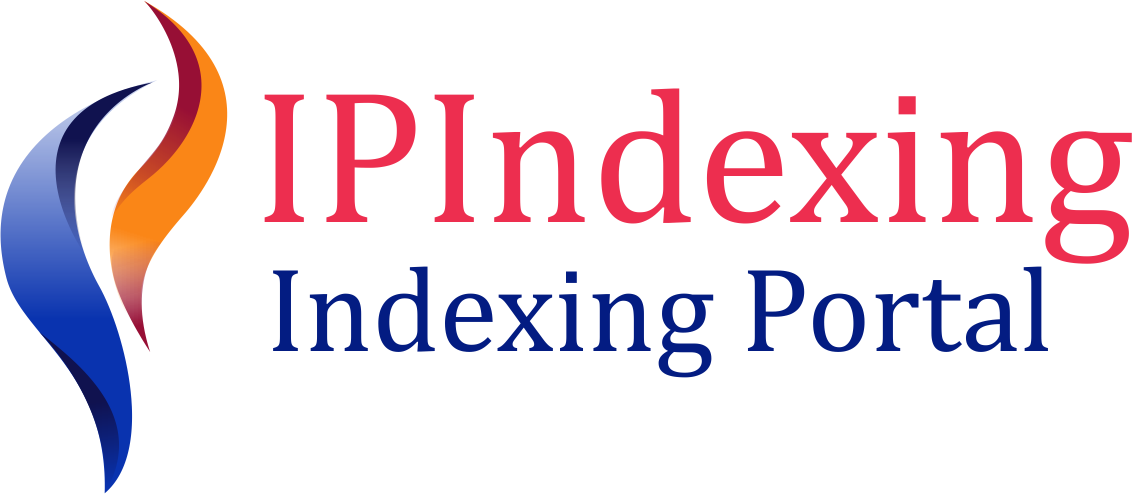Study on Identifying the Level of Inclusion of Financial Literacy in the Secondary School Curriculum Grades 10 and 11 in Sri Lanka
DOI:
https://doi.org/10.60072/ijeissah.2023.v2i01.002Abstract
Achieving competencies in key subjects and 21st-century themes is essential to student success and survival in the century. It is the responsibility of the school curriculum to promote an understanding of academic content at much higher levels by knitting 21st-century interdisciplinary themes, such as Financial, Economics, Business, and Entrepreneurial Literacy into key subjects. The purpose of this research is to explore the degree of financial literacy included in the secondary-level curriculum of Sri Lanka. A phenomenological Qualitative method was used to review the literature with a systematic examination of the content areas of major secondary school subjects. A checklist indicating a variety of attributes related to financial literacy was analyzed in the lesson topics of general subjects excluding basket subjects of ten and eleven grades in the secondary curriculum of Sri Lanka. The findings suggested that the inclusion of financial concepts directly, or indirectly in the major subject areas was hardly emphasized in the present curriculum amidst the high importance, especially at a time when the country is categorized as financially defaulted. The evidence has further indicated that low financial management literacy was not only an issue with the poor but with many high-profile professionals such as doctors, engineers, and even judges. The outcomes of the research are useful for policymakers and academics to design the curriculum and to help strengthen the economic stability of the country.
Keywords:
Financial Literacy, Financial Education, Curriculum, Sri Lanka, SecondaryReferences
Abeyrathna, S. P. G. M. (2020). Factors affecting to personal financial management behaviours of government employees in Sri Lanka. International Journal of Scientific and Research Publications, 10(5), 761-767. DOI: 10.29322/IJSRP.10.05.2020.p10188
Africa, U. N. D. P. (2017). Strengthening Strategic Alignment for Africa’s Development Lessons from the UN 2030 Agenda for Sustainable Development, the African Union Agenda 2063 and the African Development Bank High Fives (No. 2063-2018-589). https://ageconsearch.umn.edu/record/267618/
Amagir, A., van den Brink, H. M., Groot, W., & Wilschut, A. (2022). SaveWise: The impact of a real-life financial education program for ninth grade students in the Netherlands. Journal of Behavioral and Experimental Finance, 33, 100605. https://doi.org/10.1016/j.jbef.2021.100605
Bryan, G. (2019). Ambiguity aversion decreases the impact of partial insurance: Evidence from African farmers. Journal of the European Economic Association, 17(5), 1428-1469. https://doi.org/10.1093/jeea/jvy056
Bureau of Economic Research, June 2008, http://www.nber.org/papers/w14084
Central Bank Sri Lanka Financial Literacy Survey https://www.cbsl.gov.lk/sites/default/files/cbslweb_documents/financial_literacy_survey_sri_lanka_2021_e.pdf
Central Bank Sri Lanka, Annual report, https://www.cbsl.gov.lk/en/publications/economic-and-financial-reports/annual-reports/annual-report-2021
Compen, B., De Witte, K., & Schelfhout, W. (2019). The role of teacher professional development in financial literacy education: A systematic literature review. Educational Research Review, 26, 16-31. https://doi.org/10.1016/j.edurev.2018.12.001
De Clercq, B. (2023). Tax literacy: what does it mean?. Meditari Accountancy Research, 31(3), 501-523. https://doi.org/10.1108/MEDAR-04-2020-0847
Demirgüç-Kunt, A., Klapper, L., Singer, D., Ansar, S., & Hess, J. (2020). The Global Findex Database 2017: Measuring Financial Inclusion and Opportunities to Expand Access to and Use of Financial Services. The World Bank Economic Review, 34(Supplement_1), S2–S8, https://doi.org/10.1093/wber/lhz013
Dharmarathna, W. M. K. T., & Kumari, D. A. T. Factors Affecting Young Customers’ Saving Intention: An Integrative Review in Sri Lankan Context. Asian J. Interdicip. Res, 1(14), 1. DOI: https://doi.org/10.34256/ajir2121
Financial Literacy around the world. S&P Global Financial Literacy Survey 2022, Global Financial Literacy Excellence Centre. https://www.worldbank.org/en/country/srilanka/overview
Global Findex Database https://documents.worldbank.org/en/publication/documents-reports/documentdetail/332881525873182837/the-global-findex-database-2017-measuring-financial-inclusion-and-the-fintech-revolution
Kumari, D. A. T. (2020). The Impact of Financial Literacy on Investment Decisions: With Special
Kaiser, T., & Menkhoff, L. (2020). Financial education in schools: A meta-analysis of experimental studies. Economics of Education Review, 78, 101930. https://doi.org/10.1016/j.econedurev.2019.101930
Khan, M. S. R., Rabbani, N., & Kadoya, Y. (2020). Is financial literacy associated with an investment in financial markets in the United States? Sustainability, 12(18), 7370. https://doi.org/10.3390/su12187370
Klühs, T., Grohmann, A., & Menkhoff, L. (2017). Does financial literacy improve financial inclusion? Cross country evidence. http://hdl.handle.net/10419/168165
Lusardi, A., & Mitchell, O. S. (2017). How ordinary consumers make complex economic decisions: Financial literacy and retirement readiness. Quarterly Journal of Finance, 7(03), 1750008. https://doi.org/10.1142/S2010139217500082
Lusardi, A., & Mitchell, O. S. (2011). Financial literacy and planning: Implications for retirement wellbeing (No. w17078). National Bureau of Economic Research. DOI 10.3386/w17078 https://www.nber.org/system/files/working_papers/w17078/w17078.pdf
Lusardi, A., & Messy, F. (2023). The importance of financial literacy and its impact on financial wellbeing. Journal of Financial Literacy and Wellbeing, 1(1), 1-11. DOI: https://doi.org/10.1017/flw.2023.8
Lusardi, A. (2008). Financial literacy: An essential tool for informed consumer choice, National Lubna A. M & Harison M. S. (2015). EST Reading Curriculum & Instruction: An Alignment Analysis.Advances in Language and Literary Studies 6 (1):120-128. http://www.journals.aiac.org.au/index.php/alls/article/view/631/554
Lubna A. M, Harison M. S & Murad A.S. (2016). The Yemeni EST Reading Curriculum at Secondary School Level: A Level of Cognitive Demands. The 9th Malaysia International Conference on Languages, Literatures, and Cultures 16 – 18 August 2016, Penang, Malaysia
Lusardi, A., Michaud, P. C., & Mitchell, O. S. (2017). Optimal financial knowledge and wealth inequality. Journal of political Economy, 125(2), 431-477. https://doi.org/10.2139/ssrn.2249725
Mohammed, L.A., Aljaberi, M.A., Anmary, A.S., Abdulkhaleq, M. (2023). Analysing English for Science and Technology Reading Texts Using Flesch Reading Ease Online Formula: The Preparation for Academic Reading. In: Al-Sharafi, M.A., Al-Emran, M., Al-Kabi, M.N., Shaalan, K. (eds) Proceedings of the 2nd International Conference on Emerging Technologies and Intelligent Systems. ICETIS 2022. Lecture Notes in Networks and Systems, vol 573. Springer, Cham. https://doi.org/10.1007/978-3-031-20429-6_50
Mohammed, L. A., & Sidek, H. M. (2016). EST secondary school reading curriculum: the preparation for reading at tertiary level. AJELP: Asian Journal of English Language and Pedagogy, 4, 40-49. file:///C:/Users/User/Downloads/ad62e6c5-2676-463b-922c-5debcd0f94f1.pdf.
National curriculum framework for secondary education in Sri Lanka, by Ministry of Education, Sri Lanka November2020. https://educationforum.lk/wp-content/uploads/2021/08/MoE_Framework_SecondaryEducation_2020Nov.pdf
OECD, 2017a, “PISA 201: Assessment and Analytical Framework,” Chapter 5: Financial Literacy Framework, page 6 (144)
Philippas, N. D., & Avdoulas, C. (2021). Financial literacy and financial well-being among generation-Z university students: Evidence from Greece. In Financial Literacy and Responsible Finance in the FinTech Era (pp. 64-85). Routledge. https://doi.org/10.1080/1351847X.2019.1701512
Pitthan, F., & De Witte, K. (2021). Puzzles of insurance demand and its biases: A survey on the role of behavioural biases and financial literacy on insurance demand. Journal of Behavioral and Experimental Finance, 30, 100471. https://doi.org/10.1016/j.jbef.2021.100471
Programme for International Student Assessment (PISA) Results From PISSA 2015 Financial Literacy https://www.oecd.org/pisa/PISA-2105-Financial-Literacy-Australia.pdf
Reference to Undergraduates in Western Province, Sri Lanka. Asian Journal of Contemporary Education, 4(2), 110-126. https://doi.org/10.18488/journal.137.2020.42.110.126
Roy, B., & Jane, R. (2018). A study on the level of financial literacy among Indian women. IOSR Journal of Business and Management, 20(5), 19–24.
Singh, C., & Kumar, R. (2017). Financial literacy among women–Indian scenario. Universal Journal of Accounting and Finance, 5(2), 46-53. Available at: https://doi.org/10.13189/ujaf.2017.050202.
Struckell, E. M., Patel, P. C., Ojha, D., & Oghazi, P. (2022). Financial literacy and self employment–The moderating effect of gender and race. Journal of Business Research, 139, 639-653. https://doi.org/10.1016/j.jbusres.2021.10.003
Ye, J., & Kulathunga, K. M. M. C. B. (2019). How does financial literacy promote sustainability in SMEs? A developing country perspective. Sustainability, 11(10), 2990. https://doi.org/10.3390/su11102990
Zeka, B. O. M. I. K. A. Z. I. (2017). Exploring the retirement attitudes of pre-retired individuals in the Eastern Cape, South Africa. International Journal of Management and Applied Science, 3(9).
























